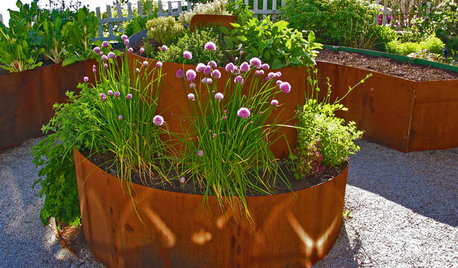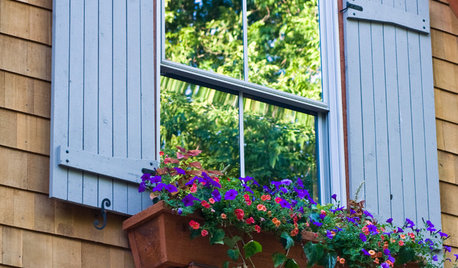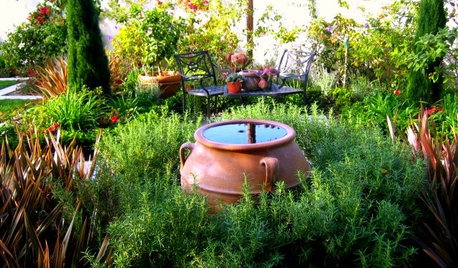What makes Alocasia robusta so hard to grow??
chris32599
18 years ago
Related Stories

URBAN GARDENSContainers Make Growing Edibles a Cinch
If life hands you a lack of land, grow lemons — with a few basics, you can proudly reap the fruits, veggies and herbs of your labor
Full Story
CURB APPEALHow to Make a Window Garden Grow
Get the scoop on materials, installation, plantings and more to bring the charming look of window boxes to your home
Full Story
GARDENING GUIDES9 Low-Growing Hedges That Make Good Neighbors
Define garden areas or borders without blocking the view, with these evergreen shrubs that take kindly to trimming
Full Story
GARDENING FOR BUTTERFLIES3 Ways Native Plants Make Gardening So Much Better
You probably know about the lower maintenance. But native plants' other benefits go far beyond a little less watering and weeding
Full Story
MOST POPULARSo You Say: 30 Design Mistakes You Should Never Make
Drop the paint can, step away from the brick and read this remodeling advice from people who’ve been there
Full Story
GARDENING GUIDESHerb Garden Essentials: Grow Your Own Delicious Mint
Pull out a pot for this one. Mint's spreading habit and hard-to-kill nature can be a blessing — if you're properly prepared
Full Story
GARDENING GUIDESHerb Garden Essentials: Grow Your Own Rosemary
With its invigorating scent, easygoing nature and ability to make dishes sing with flavor, rosemary may become your new best garden friend
Full Story
HOUSEPLANTSHow to Grow Orchids Indoors
Orchids are the exotic aristocrats of the flower world and can make themselves comfortable in almost any home
Full Story
EDIBLE GARDENSWhy Grow Quince? For Beauty, Fragrance and Old-Time Flavor
Delightfully perfumed fruit and lovely spring blossoms make this apple and pear cousin worth a spot in the garden
Full Story
SUMMER GARDENINGHow to Grow Basil
Bright color, quick growth and endless uses for cooking make this summer annual a winner in the garden or a pot
Full StorySponsored
Leading Interior Designers in Columbus, Ohio & Ponte Vedra, Florida
More Discussions






planty01976
susanlynne48
Related Professionals
Alexandria Landscape Contractors · Mooresville Landscape Contractors · Bristol Landscape Contractors · Lady Lake Landscape Contractors · Maywood Landscape Contractors · Paramount Landscape Contractors · West Allis Landscape Contractors · Westchester Landscape Contractors · Irvington Landscape Contractors · Great Falls General Contractors · Markham General Contractors · Waxahachie General Contractors · Security-Widefield General Contractors · Annapolis Siding & Exteriors · Littleton Siding & Exteriorsaroideana
chris32599Original Author
planty01976
randy_e
susanlynne48
durch
susanlynne48
randy_e
keiko2
durch
jaxfl_dude
rsieminski
beachplant
susanlynne48
AROIDIAN_att_net
daveandlaura
lariann
lomodor